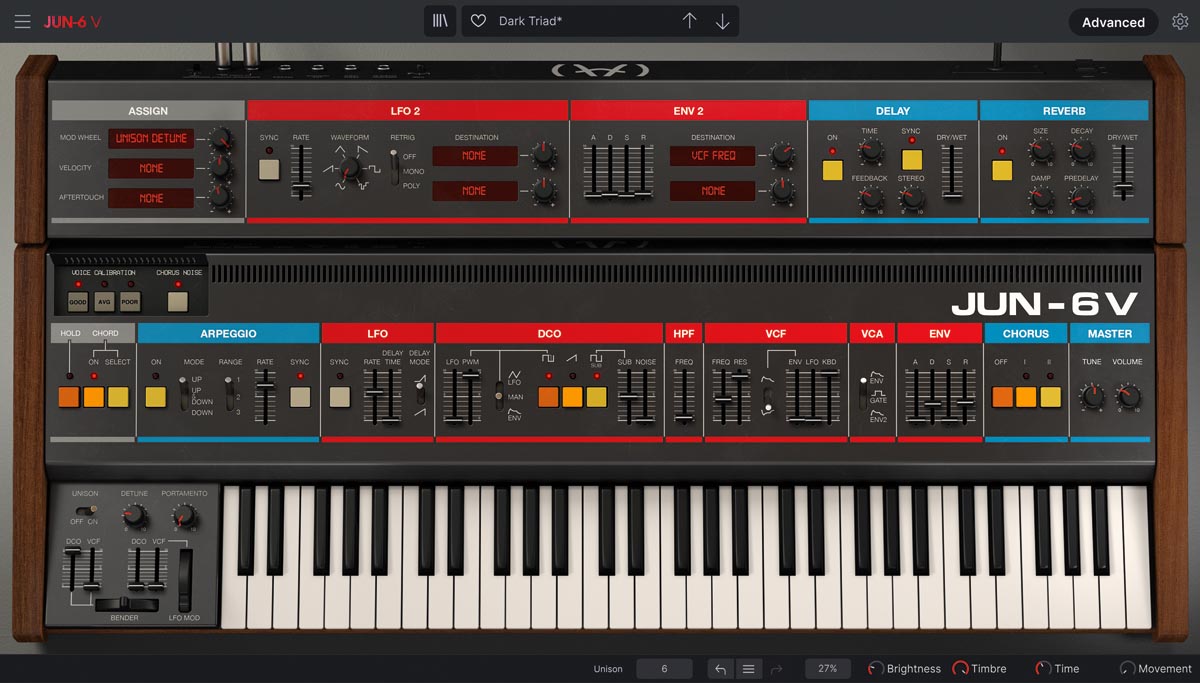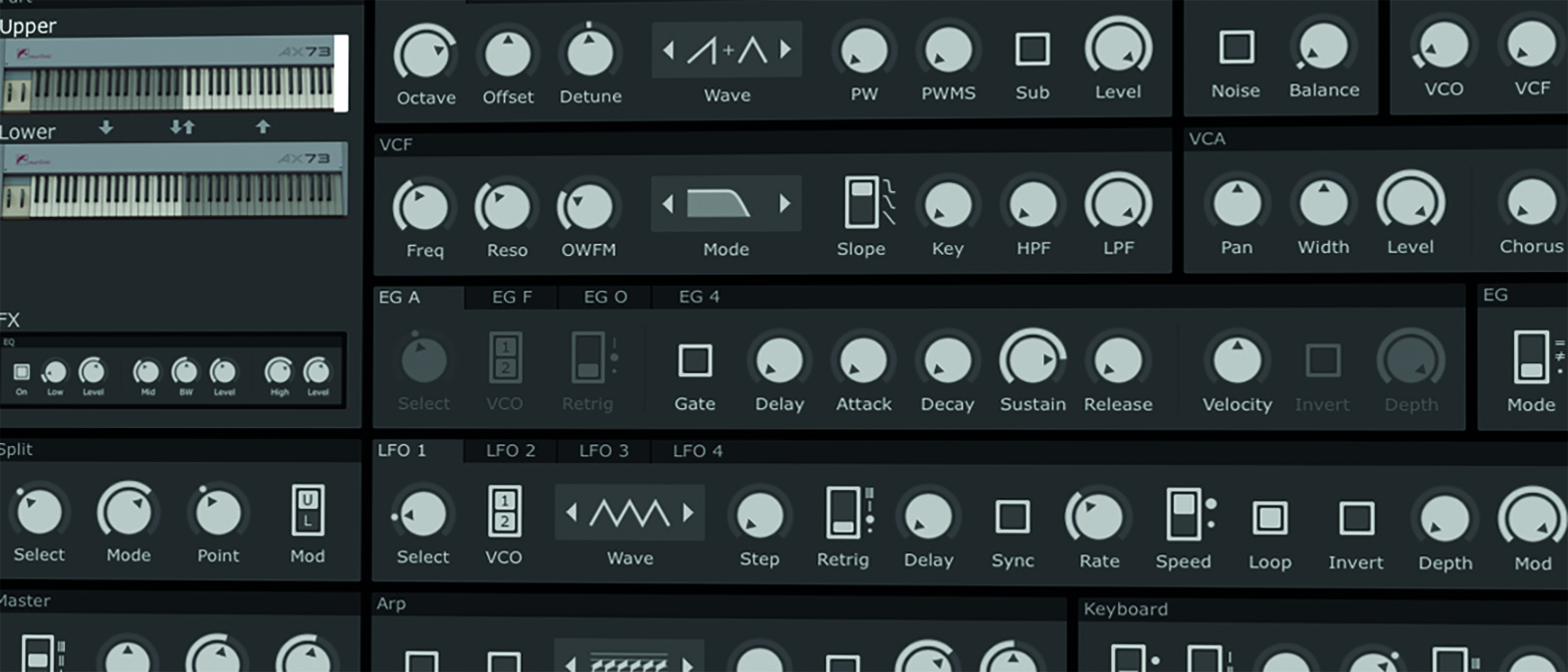MusicRadar Verdict
A stylish and detailed production, that looks fantastic and sounds even better. Plenty for 80s aficionados and contemporary users alike.
Pros
- +
It’s a bit of an unrecognised gem!
- +
ACE modelling is very impressive.
- +
The initial plugin page is beautiful.
- +
Plenty of detail and frequency depth.
- +
We LOVE the data cassette recorder!
Cons
- -
Main editor page is a bit dull.
MusicRadar's got your back
Martinic AX73: What is it?
You’d be forgiven for believing that every conceivable vintage synth had now been resurrected from the ashes as new hardware or software. That’s what we thought, until we discovered that Martinic has revisited a left behind model in the classic stakes.
Mention the brand Akai in production circles and it conjures up a reverence to hardware samplers that were once the envy of the industry. OK, there were heavy doses of small-screen key-hole surgery involved, but the Akai ’S’ series samplers were known for their filters, RAM capacity and industry-standard status.
With this in mind, it’s ever so easy to overlook the humble Akai AX73; an analogue synthesiser which offered a programming style not dissimilar to a Moog Source, or if you want to think digital, Yamaha DX7. What we mean by this, is that behind the 6-note polyphonic and analogue architecture, there was a process of parameter selection, coupled with data entry via a single slider.
Martinic AX73: Performance and verdict
In this capacity, Martinic’s software homage is immediately a far superior prospect; the first layer that confronts you, post installation, is a grey AX73 sat on a desk, complete with headphones and data cassettes, and yes, that data cassette player does emit a fax machine-like tone, which we like a lot!

• Arturia Jun-6V
Arturia’s model of the infamous Roland Juno provides a similar architecture and 80s slant.
• Korg Polysix V2
Direct competitor to the original Juno, modelled beautifully by Korg and with an elegant interface.
Unlike the original, 19 faders are immediately available for the more basic control of your chosen sound. It’s therefore slightly regretful that in order to get really under the hood of this plugin, you have to leave the graphic-laden interface behind, and dive headlong into the settings page. In this domain, you can get at every parameter quickly and easily, but in a slightly lackluster manner, if compared to the initial graphical GUI. It’s functional in spades, but it’s very monochrome!
Martinic’s process of recreation involves its ACE technology; Advanced Circuit Emulation. It’s very much a modelling process and not sample-based, hence the sound of the AX feels truly organic.
AX73 takes the original’s concept, extending with a number of new functions and parameters, the first of which takes the overall polyphony to 24 voices, while adding a second VCO per voice and a sub oscillator too.
Martinic has also thrown in a comprehensive set of effects and chorus settings, along with greater modulation capacity, represented by four LFOs and four Envelopes, which can be duplicated in layering mode, bringing it in line with other more powerful vintage polys from the 80s era. The filter offers low, band and high-pass modes, in 24, 12, and 6dB formats; from the very smooth to the exaggerated and more rugged.
Preset and patched!
One huge advantage that this plugin offers over the original model, is its capacity to allow the user to see all parameters simultaneously, or at least for the most part. Where there are multiple parameters, there’s an obvious menu layer, so the LFOs, envelope generators and two oscillators require a quick click, to get to the required component.
With this in mind, creating a patch is blissfully easy and enjoyable, with instant naming and saving from the disk-shaped icons at the top of the synth’s window. Presets can then be organised by the user, allowing favourites to be accessed quickly, alongside the factory collection.
Patches can also be tagged, so if you’re looking for a certain style or genre of sound, it’s an easy prospect to pick out the one you love. It doesn’t seem to be possible to scroll through patches from the main page though, meaning you’ll have to head into the relevant page to switch sounds.
AX-actly
We love that this offers a slightly different take on the 80s poly-brigade. It feels like an undiscovered classic, baring its soul via a healthy 600 presets, prepared by programmers who have previously done patches for everything from the DX7, to the film Bladerunner. It’s got real depth in the lower mids, and detail in the upper frequency bands, and despite the perfunctory black and white display, you’ll smile every time you return to the main screen. Add in the arp and the 80s have never looked so fun and sounded so classy.
MusicRadar verdict: A stylish and detailed production, that looks fantastic and sounds even better. Plenty for 80s aficionados and contemporary users alike.
Martinic AX73: The web says
"Martinic AX73 is a prime example of aerobatics-level digital synth necromancy at an unbeatable price."
Audio Plugin Guy
Martinic AX73: Hands-on demos
Martinic
Doctor Mix
VST's Sounds
Martinic AX73: Specifications
- Available as a VST 2.4 or AU (Audio Units) instrument plugin, which means it needs to run inside VST or AU hosting software, e.g. Ableton Live, Cubase, GarageBand, Logic Pro, REAPER, Studio One, etc.
- Although AX73 should be able to run at any sample rate the host provides, a rate of at least 44.1kHz is recommended.
- The plugin is designed to run on Windows 7 or newer as a 32-bit or 64-bit plugin, or Mac OS X 10.9 (Mavericks) or newer as a 64-bit plugin.
- CONTACT: Martinic
Computer Music magazine is the world’s best selling publication dedicated solely to making great music with your Mac or PC computer. Each issue it brings its lucky readers the best in cutting-edge tutorials, need-to-know, expert software reviews and even all the tools you actually need to make great music today, courtesy of our legendary CM Plugin Suite.
““We were arguing a lot and we were miserable”: How Green Day exceeded expectations with their most ambitious song
"There’s plenty for us guitarists to learn – and ‘less is more’ is the overriding lesson": how to play like George Harrison on The Beatles' Abbey Road
“They didn’t like Prince’s bikini underwear”: Prince’s support sets for the The Rolling Stones in 1981 are remembered as disastrous, but guitarist Dez Dickerson says that the the crowd reaction wasn’t as bad as people think











